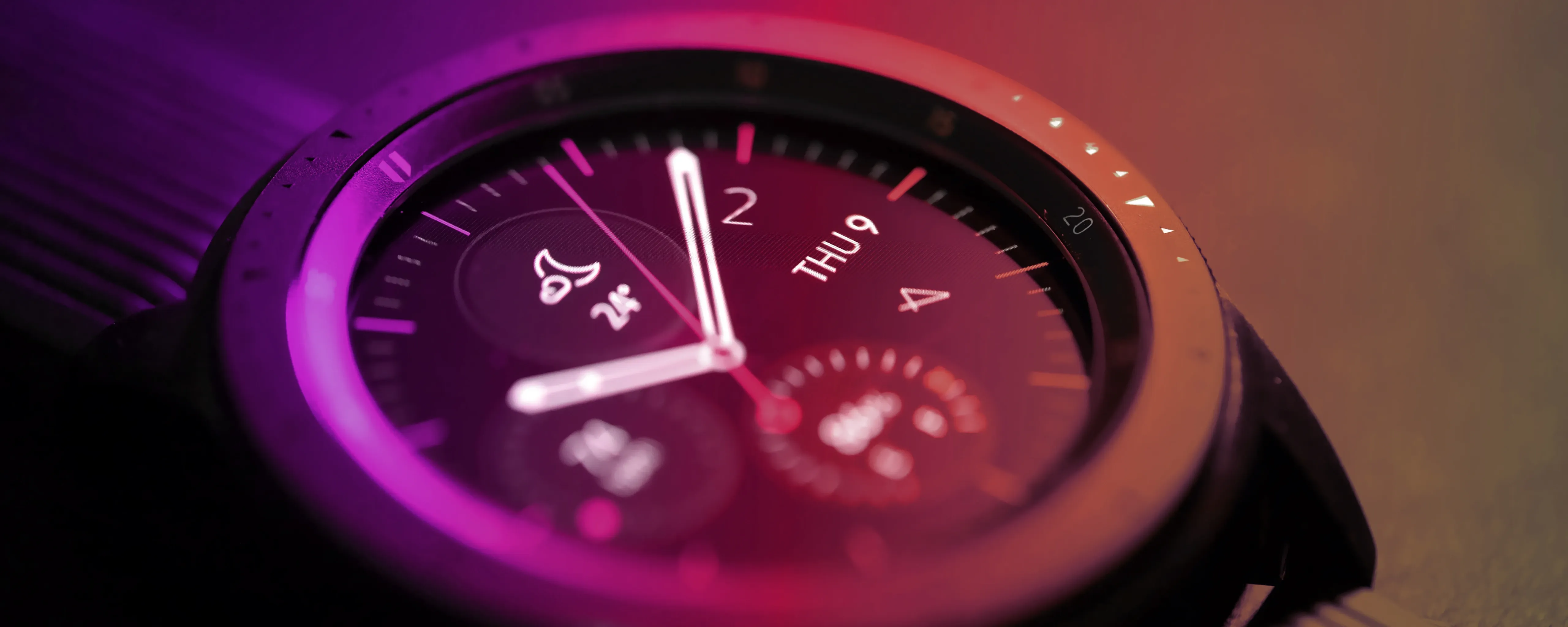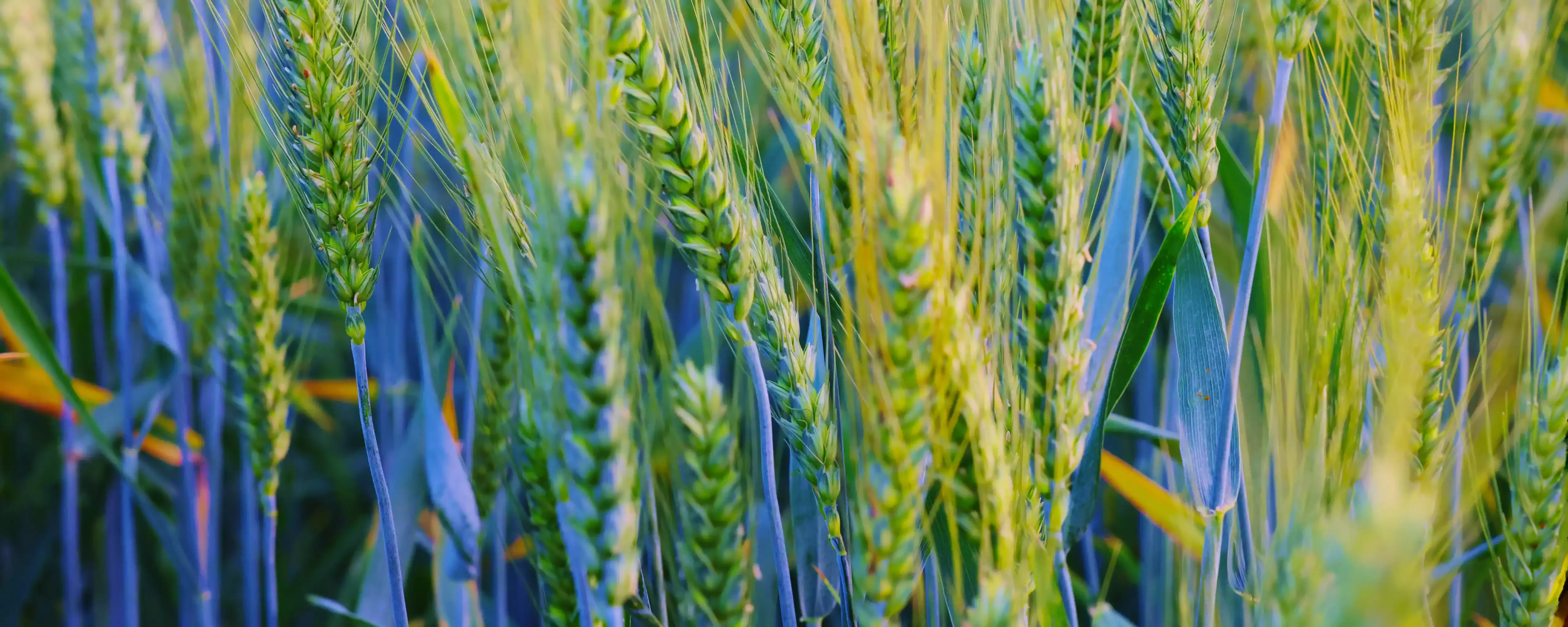Services
SERVICES
SOLUTIONS
TECHNOLOGIES
Industries
Insights
TRENDING TOPICS
INDUSTRY-RELATED TOPICS
OUR EXPERTS

August 5, 2025
The Internet of Things (IoT) refers to a concept in which physical objects, “connected things”, are equipped with embedded sensors and software to exchange data with each other over the internet. The main characteristics of the Internet of Things include:
IoT devices are connected to wired or wireless networks, using technologies such as Wi-Fi, Bluetooth, cellular, Zigbee, and LoRaWAN to communicate with each other over the internet.
IoT devices automatically collect and process data without direct human intervention.
The cloud serves as a scalable platform for storing, processing, and analyzing the information generated by IoT devices.
Businesses can use AI and machine learning to analyze vast amounts of data generated by IoT devices and identify hidden patterns and trends, predict future events, and generate personalized service recommendations for users.
The first examples of machine-to-machine communication (M2M), which formed the groundwork for modern IoT connectivity, emerged between the 1970s and 1990s. The concept of what we call today the Internet of Things was established and given its name in the late 1990s.
The Advanced Research Projects Agency Network, or ARPANET, the world’s first connected packet-switched network using TCP/IP protocol was launched. Its goal was to connect computers in universities and research centers and facilitate data sharing, while being resistant to nuclear attacks.
Students from Carnegie Mellon University connected a Coca-Cola vending machine to the university network via microcontrollers to remotely monitor the number of bottles in the machine and the temperature inside.
The TCP/IP protocol was launched, enabling different types of computer networks to connect and communicate and laying the foundation of the modern internet. The first internet-connected devices were primarily scientific computers, workstations, and servers.
Engineer John Romkey presented an internet-connected toaster at the Interop conference that allowed people to automatically turn it on, turn it off, and adjust the degree of toasting.
The Trojan Room coffee machine, an early household-focused IoT solution, was created at Cambridge University. It used a webcam to broadcast an image of the coffee pot, so employees could remotely check coffee availability.
Steve Mann created the WearCam, the first wearable video camera that recorded everything the user saw and was connected to a portable computer.
Steve Mann introduced a smartwatch with a video phone, the prototype of today's wearable computers and smartwatches.
A British engineer Kevin Ashton first coined the term "Internet of Things" while working at Procter & Gamble and later continued his research at the MIT Auto-ID Center focusing on Radio Frequency Identification (RFID) technology.
Between 2000 and 2009, smart devices started to appear, wireless technologies (Wi-Fi, RFID) were actively developed, and the IoT concept was recognized internationally. Since then, there has been a trend to interconnect various devices from household items to vehicles, which has fueled the emergence of intelligent solutions for IoT home automation, as well as for cities and businesses energy and safety management.
The company LG brought to the market the first smart refrigerator called DIOS, equipment with advanced functions, including internet access, built-in display, TV, barcode scanner, and MP3 player.
Leading corporations, like Walmart and Metro Group, and government agencies began to actively use IoT technology to control and monitor product flows. This step became a powerful driver for the rapid evolution of IoT infrastructure.
Electronic Product Code for Second Generation standard (EPCglobal gen 2) was published to ensure the interoperability and efficiency of radio frequency identification (RFID) on a global level.
Zurich was the setting for the first global IoT conference, which brought together experts from more than twenty countries. The event focused on RFID, wireless data transmission, and sensor network architecture.
The number of connected devices became larger than the number of people living on earth. Cisco reported 12.5 billion devices for 6.8 billion people in 2010, compared to 500 million devices for 6.3 billion in 2003.
Scheme title: Growth in the number of connected devices
Data source: Cisco
Between 2010 and 2016, the emergence of IoT standards and protocols, as well as significant investments from large technology companies, helped form a stable IoT infrastructure for future large-scale growth. This period marked a groundbreaking point when the technological maturity and the proliferation of IoT use cases, commercial interest, and practical benefits of technology implementation across industries began to converge.
Main factors driving IoT growth during this period were:
due to the emergence of smartphones (Android, iPhone), more affordable Wi-Fi, and the development of embedded systems or microcontrollers, like Arduino or Raspberry Pi.
and mass adoption of 4G/LTE, RFID, along with NFC for convenient data transfer over short distances, which promoted the adoption of IoT in agriculture, automotive, logistics, and other industries that required reliable connectivity in remote areas.
with cloud platforms such as AWS, Google Cloud Platform, and Microsoft Azure becoming mature enough to support IoT data analytics and storage.
that encompasses six layers with more clearly defined responsibilities and has evolved from the original three-layer model to better support the complexity of emerging IoT systems.
like the Fitbit fitness tracker, Nest thermostats, and Samsung smartwatches, and the rise of the Industrial IoT (IIoT).
including Cisco, IBM, Intel, and Qualcomm, heavily investing in IoT startups, standards, and technologies like MQTT.
Google officially began testing its self-driving cars, starting with a IoT sensor-equipped Toyota Prius capable of 360-degree environment visibility and road users behavior prediction.
St. Jude Medical introduced the first wireless USB adapter for Merlin@home transmitters, its cardiac devices, enabling secure patient data transmission via cellular network for a doctor's review.
The term "Internet of Things" first appeared in Gartner's "Hype Cycle for Emerging Technologies" report as a promising yet "overrated" technology that could radically transform business operations and everyday life.
Internet Protocol version 6, known as IPv6, was introduced as the key step towards supporting billions of IoT devices around the globe.
The concept of fog computing was introduced and published by Cisco, which involved processing data closer to its source to minimize latency and increase the efficiency of real-time systems.
The company Amazon launched the Amazon Echo as the first innovative smart home device along with the Alexa voice assistant capable of recognizing commands to provide weather, news information and control smart appliances.
Apple has released HomeKit, a software framework that provides centralized control of a range of devices in homes, like lights, locks, and thermostats through a mobile app.
Several leading organizations, including Cisco, Dell, Intel, and Microsoft, have come together to create the OpenFog Consortium, aimed at implementing fog computing standards for the Internet of Things.
Since 2016, companies and startups have scaled up IoT device production, with IoT adoption accelerating across Industry 4.0 (IIoT), agribusiness, transportation, and telemedicine.
The period from 2019 through 2025 has marked a transformative era for the Internet of Things, characterized by accelerated IoT adoption, technological breakthroughs, and difficulties due to the COVID-19 pandemic, as well as its lasting impacts on the world. Among factors contributing to the rapid growth of the IoT market and its widespread adoption globally were:
Gartner predicted that the enterprise and automotive IoT market would grow to 5.8 billion endpoints by 2020 (a 21% increase from 2019). Enterprises began to utilize IoT to enhance efficiency, while automakers adopted connected vehicles and telematics to improve vehicle performance and security.
The Connected Home over IP (CHIP) project, later called Matter, was announced and supported by Apple, Google, Amazon, and Zigbee Alliance. Its goal was to develop an open standard for smart homes to create interoperable IoT devices from various manufacturers.
Amazon introduced Sidewalk, a long-range networking protocol that enables the connection of smart devices beyond Wi-Fi, thereby expanding the IoT ecosystem for the home.
Medical devices applications and telemedicine gained popularity for remote patient health monitoring and early illness diagnosis, thereby eliminating the need for in-person medical visits.
Boston Dynamics introduced Spot, equipped with telemetry capability, to remotely monitor patients in hospitals without direct contact during the COVID-19 pandemic.
Starlink started the mass deployment of satellites and internet services in remote and rural areas worldwide.
GE and Siemens have introduced digital twins into real-time-based industrial IoT systems to simulate manufacturing processes.
Adoption of Matter 1.0 by Google, Amazon, Apple, and others, enabling better connectivity between devices from different manufacturers.
The integration of AI and edge computing in logistics and transportation demonstrated by companies such as Tesla, Nvidia, Bosch, and others to show platforms that can process telemetry data in real time without the need for remote servers.
IoT became actively used in agriculture as startups implemented scalable systems for real-time monitoring of microclimate and soil moisture, with autonomous data transmission via LoRaWAN and 5G.
T-Mobile, one of the leading network operators in the U.S., launched RedCap 5G,or 5G NR-Light, a 5G technology designed for energy-efficient and cost-effective connectivity of IoT devices and wearable electronics that do not require high bandwidth.
A new version of Matter 1.4 standard was released by Connectivity Standards Alliance. This version expands the ability to connect and control new types of smart home devices that were previously unsupported, including solar panels, water heaters, and heat pumps.
Synopsys acquires Ansys for $35 billion to integrate digital modeling (Ansys) and electronics design automation (Synopsys) tools to create solutions for the smart manufacturing, automotive and energy industries.
The Ambient IoT Alliance (AIoTA), which includes Intel, Qualcomm, Atmosic, Infineon, and Wiliot, was formed to develop the Ambient IoT ecosystem - battery-less devices that harvest energy from the environment (radio waves, light, vibration, etc.).
The IoT Solutions World Congress, which attracted over 11,000 attendees from more than 100 countries, took place in Barcelona, showcasing key innovations in IoT and AI, including demonstrations of new AI-accelerated chips and computer vision solutions for edge devices.
The future of the Internet of Things is promising as the technology continues to transform everyday life and business processes. The impact of IoT will become even more tangible due to its synergy with advanced technologies such as AI and ML, edge computing, blockchain, digital twins, and 5G. Together, they will drive new business models, improve resource efficiency, and accelerate innovation while also requiring close attention to security, data privacy, and resilient IoT infrastructure.
| The global IoT market size is estimated at $76.97 billion in 2025 and is projected to reach $356.23 billion by 2034, growing at a CAGR of 18.56% from 2025-2034 | |
|---|---|
| The number of Internet of Things devices worldwide is expected to increase from 19.8 billion in 2025 to more than 40.6 billion by 2030 | |
| The global AI in IoT market is valued at $93.12 billion in 2025 and is projected to reach $161.93 billion by 2034, growing at a CAGR of 6.35% between 2025 and 2034 | |
| Revenue from IoT data and analytics services is expected to grow by 19% per year, increasing from $91.9 billion in 2025 to approximately $218 billion by 2030 | |
| The global IoT security market size is projected to grow from $45.15 billion in 2025 to approximately $383.11 billion by 2034 |
| The predictive maintenance market that is largely driven by the adoption of Industrial IoT was valued at $10.6 billion in 2024 and is projected to reach $47.8 billion in 2029 at a CAGR of 35.1% | |
|---|---|
| The digital twin market size was worth $19.80 billion in 2024 and is expected to achieve $471.11 billion by 2034, growing at a CAGR of 37.29% between 2025 and 2034 | |
| The blockchain IoT market reached $761.03 million in 2024 and is predicted to reach an outstanding $74772.36 million by 2035 | |
| Edge computing continues to grow at a tremendous rate with global revenue expected to reach $350 billion by 2027 | |
| By 2031, the global 5G industrial Internet of Things market is projected to reach $9.41 billion, at a CAGR of around 28% |
| The global automotive IoT market is estimated at $188.42 billion in 2025 and is expected to be worth $1,094.12 billion by 2034, growing by 21.71% | |
|---|---|
| The number of autonomous cars will reach over 400 million by the end of 2025, up from about 237 million in 2021 | |
| The global industrial IoT market exceeded $194 billion in 2024 and will surpass $286.3 billion in five years | |
| It is predicted that by 2025, about 152 million Internet of Things devices will be used in the industrial sector | |
| The industrial safety market, which implies using IoT technology, sensors, and wearable devices, was valued at $6.2 billion in 2024 and is expected to grow to $8.9 billion in six years | |
| In 2024, more than 54% of businesses around the globe are using IoT technology to track and manage their supply chains | |
| By 2024, approximately 55% of organizations will implement IoT to monitor and improve the quality of produced goods | |
| The overall agriculture IoT market was valued at $28.65 billion in 2024 and is expected to grow by 10.5% through 2030 | |
| The global Internet of Things in healthcare market is estimated to reach $65.03 billion in 2025 and $368.06 billion a decade later. | |
| Approximately 55% of companies in 2024 relied on IoT to monitor and manage energy consumption |
IoT implementation, along with its integration with other modern solutions, such as artificial intelligence, and machine learning, is opening up vast opportunities for transforming every industry and having a meaningful impact on quality of life.
IoT technology helps organizations improve internal processes by minimizing the need for manual intervention and enabling greater accuracy and speed of routine operations.
IoT devices collect tons of data, which, when processed by analytics solutions or AI and ML models, enables companies to develop more accurate, cost-effective, and actionable strategies spanning various industries and domains.
The adoption of IoT technology enables businesses to allocate resources more efficiently by automating processes, such as condition-based equipment maintenance and real-time inventory and logistics management, resulting in measurable cost savings.
IoT devices can monitor personnel movement in the workplace, equipment operations, and environmental parameters such as smoke or gas leaks in real-time, allowing for instant action to prevent accidents and ensure safety at facilities.
From wearable systems to autonomous vehicles and remote health care, IoT technology is opening up opportunities to create new business solutions. With real-time data analytics, companies can rapidly validate new concepts, incorporate changes, and adapt to changing market trends.
While IoT technologies have made significant progress, their large-scale adoption comes with a few challenges:
Challenge | Solution | |
|---|---|---|
Security & privacy concerns |
As the amount of IoT systems increases, so does their vulnerability to cyber threats. In addition, a lot
of IoT devices may rely on limited computing capabilities, often don’t have advanced security mechanisms
and software updates, or use weak or outdated authentication methods. These security gaps in IoT can result in the increased risk of data breaches, unauthorized access, cyberattacks, and operational disruption. | To properly protect enterprise IoT solutions, you need to build them with security in mind. Some of the best practices for securing your IoT ecosystem include:
IoT security encompasses not only technical solutions, such as data encryption and automated software updates, but also organizational measures. These include aligning an internal security management system with industry standards (e.g., ISO/IEC 27001), conducting staff training on basic security practices, and establishing internal policies and incident response procedures. |
Interoperability enablement |
The IoT market is filled with devices developed by different manufacturers, which often run on
incompatible platforms and use non-standardized communication protocols. This poses certain challenges to
exchanging data between multiple systems and integrating devices into a unified IoT ecosystem.
| To address the interoperability challenge, businesses should adopt the following best practices:
|
Itransition offers a full range of IoT services, from solution design and implementation to ongoing support to help businesses across various industries build and maintain effective IoT ecosystems.

We guide you through the entire IoT development process, from selecting IoT components and setting up cloud infrastructure to post-launch support. We prioritize the stability of operations and high security to ensure that your IoT ecosystem functions efficiently for sustainable future growth.
Our consultants help you conceptualize the optimal IoT solution for your company and guide you on its implementation. By analyzing your business goals and functional requirements, we create a clear roadmap for implementing IoT solutions that align with your business, budget, and timeline.

Service
Professional IoT development services to deliver IoT solutions that efficiently manage the network of connected devices and generate real-time insights.

Insights
Explore the step-by-step guide for IoT implementation, along with its industry use cases, benefits, and common challenges and efficient ways to overcome them.

Service
Itransition offers IoT consulting services to provide businesses expert guidance through their IoT projects and ensure the solution’s efficiency and high ROI.

Insights
Learn about the use cases, real-life examples, and challenges of the Internet of Things in insurance and how its adoption can optimize your insurance processes.

Insights
Discover how IoT can help manufacturers optimize supply chains, energy management, enhance inventory management, improve product performance, and boost revenue.

Insights
Discover common healthcare IoT use cases, benefits, and challenges, how the technology works, and which platforms to consider for medical IoT implementation.

Insights
Explore 35 IoT use cases across various industries, top market statistics for 2025, and best practices for IoT adoption.

Insights
We observe the agricultural IoT market state, detail key IoT applications in farming, and share solutions to the main challenges of IoT in agriculture.